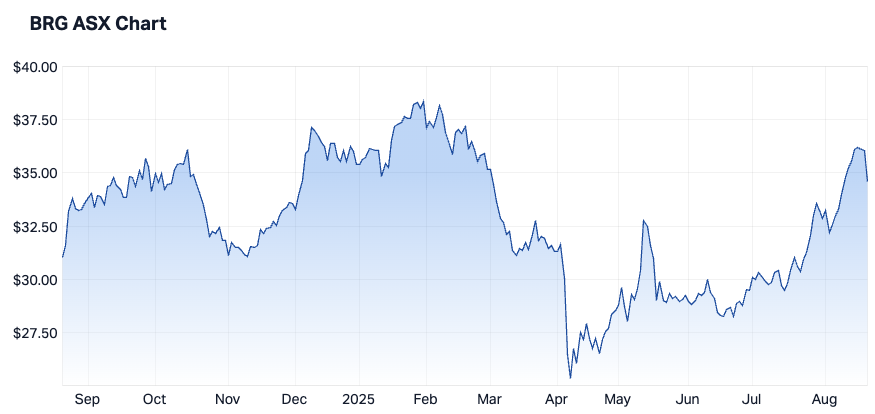Breville delivers solid beats across the board, but tariff pressures loom
Breville is the great Australian success story, but it divided the fundies this year. The naysayers say it’s a potential trade war victim and that, at the end of the day, it's a small kitchen appliance business, trading at a PE of 40x.
Today, Breville (ASX: BRG) delivered another solid result, with clean beats across the board, riding the wave of booming global coffee trends and strong growth across all regions, while making early inroads into new markets like Asia and the Middle East.
Yet, not all is smooth sailing. Management flagged looming input cost pressures in FY26–27, particularly in the US, which accounts for nearly half of earnings. With no formal guidance provided, the otherwise impressive result is tempered by uncertainty, leaving the stock feeling the weight of caution even amid strong underlying momentum. Breville shares opened the session 2.2% higher ($36.86) but quickly faded to a 3.0% dip ($34.95) by noon.
FY25 key highlights
Revenue up 10.9% to $1.69bn vs. $1.68bn ests (0.4% beat)
Gross profit up 11.4% to $620.5m vs. $616.3m ests (0.7% beat)
Gross profit margin up 17 bps to 36.6% vs. 36.5% ests (10 bp beat)
Underlying EBIT up 10.2% to $204.6m vs. $202m ests (1.3% beat)
NPAT up 14.7% to $135.9m vs. $133.4m ests (1.9% beat)
Full-year dividend up 12.1% to 37 cps vs. 36.7 cps ests (0.8% beat)

We asked James Nguyen of Tyndall Asset Management to give us his take on the recent results.

What was the key takeaway from Breville's result in one sentence?
The result was marginally ahead of expectations, with no real surprises from a team that continues to consistently deliver what they have communicated to the market.
Were there any surprises in this result that you think investors need to be aware of?
While there were no real surprises, it definitely wasn’t a boring or straightforward result. In the US, which is their biggest market, the impact from tariffs on this result was managed through inventory pull forward, which in itself can be risky if the end demand isn’t there. But hats off to the management team for managing this well.
Would you buy, hold or sell Breville off the back of this result?
Rating: BUY
Breville is a material holding for us, which we initiated post the Trump-induced Liberation Day sell-off. This is a multi-year structural growth story, and the short-term volatility at that time has provided a great opportunity for active managers.
Are there any risks investors need to be aware of?
Breville has been a business that has been able to compound 10% earnings growth for the past decade under the stewardship of Jim Clayton. Next year could be the trickiest year yet as the company attempts to minimise tariff impacts through relocating manufacturing capabilities, managing distribution channels, and taking price where they can. Against this backdrop, the company is unlikely to deliver its historical earnings growth in FY26. For us, low single-digit earnings growth for FY26 would be a commendable outcome given all the moving parts. For long-term investors, this earnings growth hiccup will be a short-term blip rather than a change to the long-term structural growth story.
From 1 to 5, where 1 is cheap and 5 is expensive, how much value are you seeing on the ASX today?
Rating: 4
I would classify the market as a 4. Even with the CBA wobbles, the bank is still trading on 28-times forward earnings for 3-4% EPS growth. Given that it represents 10% of the large-cap index, there is a lot of valuation risk in the large-cap index. But for small caps, I would rate it as a 2. The small-cap index has underperformed the large-cap index for the past three years, which sees the small-cap index now trade at a ~15% discount to the large-cap index when it has historically traded at a 5% premium. We are in the early stages of a rate-easing cycle that has historically been supportive for small caps. And the earnings season has so far proven to be resilient, which is supportive for small caps, given they are more leveraged to the economic cycle.
1 stock mentioned
1 contributor mentioned

.jpg)
.jpg)